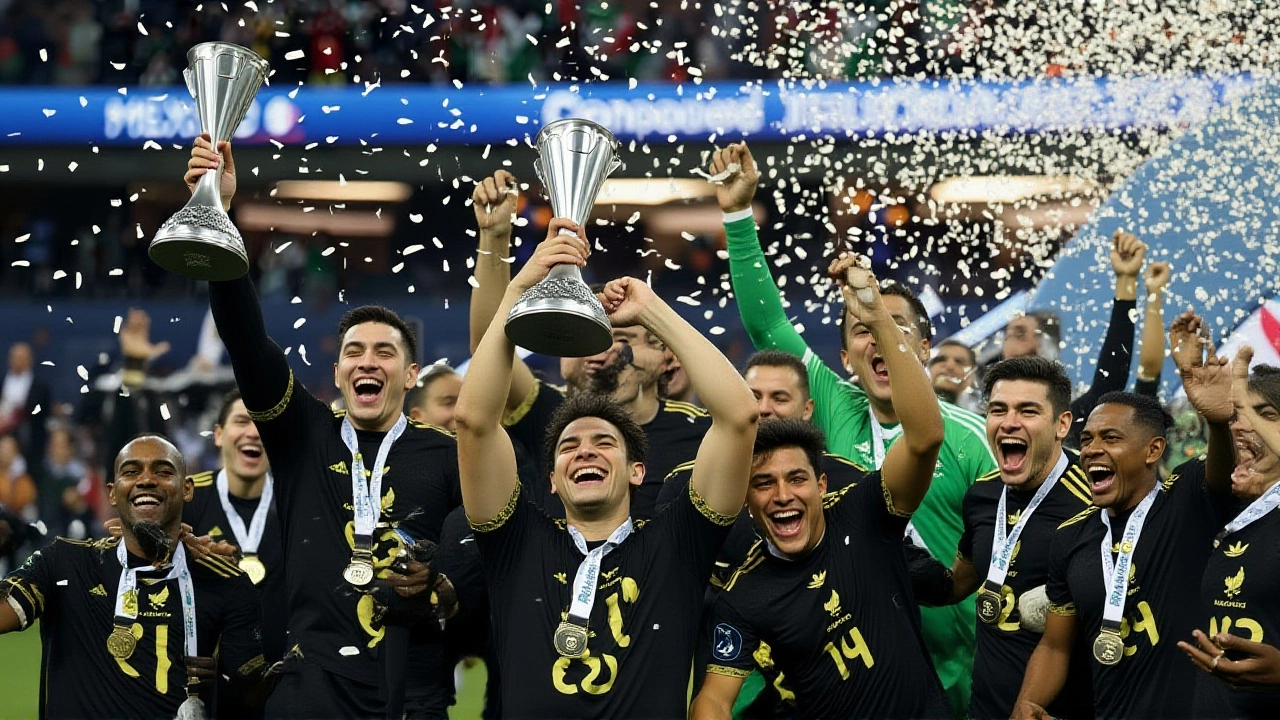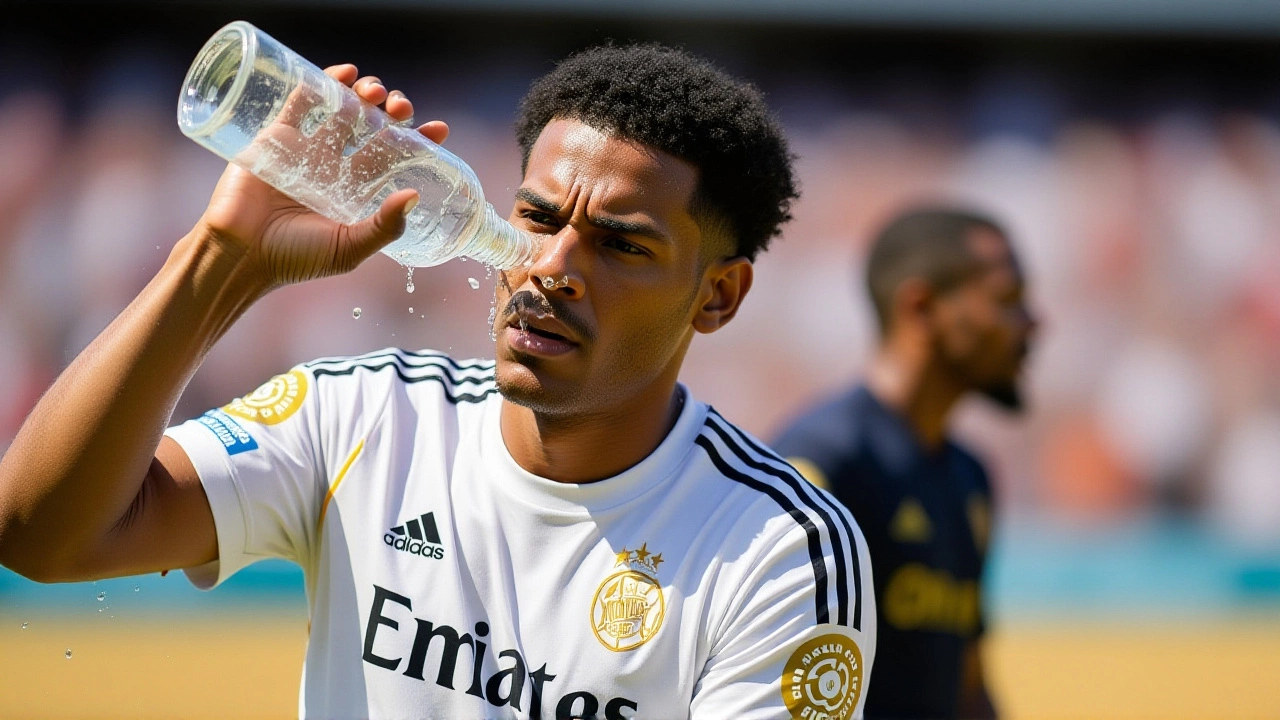Some World Cup 2026 matches could kick off at 2am British Summer Time — the middle of the night for European viewers — if FIFA prioritizes player safety over broadcast convenience. The decision, reported by Sky Sports on October 2, 2025, comes after alarming data emerged from the 2025 Club World Cup, where extreme heat in North American venues pushed athletes to the brink. With the tournament set to unfold across 16 cities in the United States, Mexico, and Canada, officials are weighing whether to schedule games at 5pm, 8pm, 11pm, and even 2am BST to avoid the sweltering afternoon and early evening temperatures that could trigger heat stroke, exhaustion, or worse.
Why the Midnight Kick-Offs?
It sounds absurd. A global spectacle, watched by billions, played while most of Europe sleeps. But here’s the thing: in July and August, cities like Atlanta, Dallas, Houston, Kansas City, and Miami don’t just get hot — they become ovens. Humidity clings to the air like wet wool, and under a heat dome, temperatures don’t drop after sunset. The FIFPRO, the global players’ union, has flagged these five U.S. cities — plus Monterrey in Mexico — as ‘extremely high risk’ for heat-related injuries. Three more venues are classified as ‘very high risk,’ though unnamed. Dr. Vincent Gouttebarge, FIFPRO’s medical director, didn’t mince words: ‘These games should have been postponed to a better place in the day… if not available, then rescheduled.’
That’s not just opinion. It’s science. The FIFA Wet Bulb Globe Temperature (WBGT) threshold for mandatory cooling breaks is 32°C (89.6°F). Major League Soccer, by contrast, pulls the plug at 29°C (84.2°F). During the 2025 Club World Cup, FIFA implemented cooling breaks regardless of WBGT — a sign they were already bracing for trouble. Now, with 104 matches to schedule, the pressure is mounting. Broadcasters in Europe and Asia want evening games. Players want to survive them.
The Broadcast vs. Body Balance
Victor Montagliani, president of CONCACAF, admitted the tension live at the Leaders Sports Business Conference. ‘We’re in conversations daily with European broadcasters about what stadiums you can play in at 3pm — the likes of Atlanta, for instance,’ he said. Some venues, like those in Dallas and Los Angeles, have retractable roofs and air conditioning. That’s a lifeline. But many don’t. And even with shade, the ground temperature can hit 50°C (122°F). One player told ESPN, ‘It’s not just the heat. It’s the air you can’t breathe.’
The 2am BST slot — which translates to 9pm local time in Miami or 6pm in Los Angeles — might sound like a compromise. But it’s a brutal one. Players would be warming up in the dark, under stadium lights, with humidity still clinging to the field. Spectators? They’d be battling bugs, fatigue, and the psychological toll of a game that feels like a midnight vigil. Still, FIFPRO says it’s better than risking lives. ‘Modern sports science doesn’t allow us to ignore this,’ Gouttebarge added. ‘We’ve known for years what heat does to the human body under exertion.’

Altitude, Humidity, and the Hidden Divide
Not all host cities face the same threat. Monterrey may be a hotspot, but Mexico’s higher-altitude venues — like Guadalajara or Puebla — benefit from thinner air and cooler nights. Meanwhile, Canadian cities like Toronto and Vancouver are expected to be relatively mild. The real danger zone? The humid belt of the southeastern and central U.S. That’s where the ‘heat dome’ phenomenon — a high-pressure system trapping hot air like a lid — turns stadiums into pressure cookers. Meteorologists say this isn’t unusual for summer in these regions. It’s becoming the norm.
Compare that to the 2030 World Cup, slated for Spain, Portugal, and Morocco. Yes, temperatures there will soar past 90°F. But the dry heat is different. It’s easier for the body to cool through sweat evaporation. In Houston or Atlanta, sweat doesn’t evaporate — it drips. And that’s when your core temperature spikes. No amount of water can fully compensate.
What’s Next? Silence from FIFA
When ESPN reached out to FIFA for confirmation on scheduling plans, they got no reply. That silence speaks volumes. FIFA is caught between two worlds: the commercial engine of global broadcasting and the ethical imperative to protect athletes. They’ve already moved the 2022 World Cup to November — a historic shift — to avoid Qatar’s summer heat. Now, they’re being asked to do it again, but this time in front of a Western audience used to 8pm kick-offs.
Some suggest a hybrid model: early games in the hottest cities, prime-time slots in cooler ones. But that creates a two-tier tournament — a logistical nightmare for fans, broadcasters, and teams alike. Others wonder if the tournament should be moved to spring or fall. But the calendar is packed. The Olympics. The Euros. The World Cup is a beast that demands June-July.
So the options shrink. Midnight kick-offs. Or medical emergencies.

Why This Matters Beyond the Pitch
This isn’t just about football. It’s about how we treat athletes in a warming world. If we’re willing to schedule a global event at 2am just to keep players alive, what does that say about our priorities? The FIFPRO isn’t being dramatic. They’re citing peer-reviewed studies on core body temperature, hydration thresholds, and cardiac strain under heat stress. They’re not asking for luxury. They’re asking for survival.
And if FIFA ignores them? The next World Cup might not just be remembered for goals or upsets. It could be remembered for the players who collapsed on the field — and the system that let it happen.
Frequently Asked Questions
Why can’t FIFA just move the 2026 World Cup to a cooler time of year?
Because the global football calendar is locked. The Euros, Copa América, and Olympics all occupy June–July. Shifting the World Cup would disrupt club seasons, TV contracts, and sponsorships worth billions. FIFA tried this in 2022 with Qatar and faced massive pushback from European leagues. Moving it again isn’t politically or financially feasible.
How do the 2am kick-offs affect European viewers?
Matches at 2am BST mean viewers in the UK and Western Europe would need to stay up past midnight or record games. In Eastern Europe, it’s 3–4am — effectively a school night. Broadcasters fear ratings collapse, but FIFPRO argues viewership shouldn’t come at the cost of player health. Streaming may soften the blow, but live TV revenue remains critical.
Which venues are considered safest in the 2026 World Cup?
Higher-altitude cities like Guadalajara, Mexico, and Canadian venues such as Toronto and Vancouver are expected to be significantly cooler. Even U.S. cities like Seattle and Portland, with milder summers, pose lower risk. But the tournament’s most high-profile matches — including the final — are likely to be held in the largest, most commercialized stadiums, which are often in the hottest zones.
What cooling measures will FIFA use during matches?
FIFA mandates one cooling break per half if WBGT hits 32°C, allowing players to hydrate and cool down. But in 2025’s Club World Cup, breaks were given regardless of temperature — a clear signal they’re preparing for more aggressive intervention. Ice vests, misting fans, and shaded hydration zones are also planned. Still, experts say these are stopgaps, not solutions.
Has any player spoken out publicly about the heat risks?
Yes. Several MLS players, including those from Houston Dynamo and Atlanta United, have privately expressed concern to FIFPRO. One unnamed defender told ESPN: ‘I’ve played in 100-degree heat before — but never with humidity like this. You feel like your lungs are full of cotton.’ No top European stars have spoken publicly yet, likely due to contractual silence clauses.
Could this lead to future World Cups being held in different seasons?
Possibly — but only if climate change makes summer football globally untenable. The 2026 tournament is a stress test. If heat-related incidents occur, pressure will mount for 2030 to shift to spring or autumn. But with the 2030 host nations (Spain, Portugal, Morocco) facing dry heat rather than humid extremes, FIFA may still gamble on traditional timing — unless science forces their hand.

Landon Beauregard
Hello, my name is Landon Beauregard, and I am an expert in gambling with a passion for writing about games. Over the years, I've honed my skills in various casino games and developed a keen understanding of the strategies and intricacies involved. I enjoy sharing my knowledge with others by writing informative and engaging articles on the latest gaming trends and techniques. I believe that my expertise in gambling, combined with my love for writing, allows me to provide my readers with a unique and valuable perspective on the world of gaming.